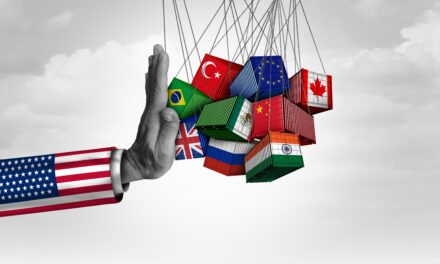China urged President Donald Trump on Wednesday to listen to developing countries after the American leader criticized its trade status at the United Nations.
A foreign ministry spokesman called on Trump to “meet China halfway” in settling trade disputes.
The two governments are locked in an escalating tariff war over complaints about Beijing’s trade surplus and technology ambitions. It threatens to tip the global economy into recession.
Trump complained Tuesday that the World Trade Organization improperly gives China preferential treatment. He was referring to complaints China, the No. 2 global economy and biggest trader, is abusing the leeway given to developing countries to subsidize exports or delay opening markets.
The United States should “listen to developing countries’ calls for rapid development, opposition to bullying and suppression and aspirations for peace and stability,” said the Chinese spokesman, Geng Shuang.
China has insisted it has the right to pursue development in response to complaints by Washington and other trading partners that its industry plans violate Beijing’s market-opening commitments and are based on stealing or pressuring companies to hand over technology.
U.S. and Chinese negotiators are due to meet in October for a 13th round of talks aimed at ending the trade war. There has been no sign of progress since talks deadlocked in May.
“The United States should see China’s development with an open, inclusive and win-win attitude and meet China halfway to control differences on the basis of mutual respect,” Geng said.
ADB Trims Asian Outlook, Citing Trade Wars, Global Slowdown
The Asian Development Bank has downgraded its growth forecasts for the region, saying escalating trade tensions are sapping economies of some of their potential.
The regional lender said in a report released Wednesday that it expects regional growth of 5.4% this year and 5.5% in the coming year, slightly below its earlier forecasts.
A further deterioration in the tariff war between China and the U.S. poses risks that stretch beyond that conflict and beyond the region, the Manila, Philippines-based bank said.
Asian economies logged 5.9% growth in 2018, but faltering exports and investment have sapped the region of some of its dynamism. Meanwhile, growth in wealthy, advanced economies has also flagged.
“Downside risks to the outlook have intensified” with repercussions beyond trade, the report said. “The conflict will likely persist at least into 2020 and could broaden to involve other regional economies.”
China and the U.S. are due to resume negotiations on their dispute over trade and technology policies next month after talks collapsed in May.
Both sides have imposed punitive tariffs on billions of dollars’ worth of each other’s products, hurting a wide range of industries and the businesses associated with them.
The report noted that the trade conflict has hurt exports from industrializing countries in Asia that are suppliers to China of parts and other intermediate manufacturing materials.
For developing Asian countries, growth will remain at about 6%, it said.
“In spite of an overall slowing down of the Asian economies the growth rate still seems robust and stable,” Yasuyuki Sawada, the ADB’s chief economist, said in an interview from Manila.
Uncertainties over trade tensions could further destabilize financial markets, compounding other problems.
“We see rising private debt in developing Asia, corporate debt in China and consumer debt in South Korea, Malaysia and Thailand,” Sawada said.
But he said he did not anticipate major financial shocks from outside the region, and most regional central banks are in a position to adjust interest rates to help spur more lending to support growth.
The disruptions to trade and manufacturing from the clash between the U.S. and China come at a time when the electronics sector is already hitting a soft spot, with demand for computer chips and other vital components waning.
Semiconductor sales are expected to fall by more than 13% this year from last year, the report cites the World Semiconductor Trade Statistics group as saying.
U.S. efforts to keep Chinese telecoms giant Huawei Technologies from participating in the rollout of next-generation “5G” networks and products is also slowing demand, with Taiwan and South Korea hit the hardest, it said.
But Sawada said the downturn in the sector appeared to be bottoming out. If the 5G networks are rolled out as expected in the next year, conditions will improve.
Overall, the ADB downgraded its forecasts for 17 regional economies that account for nearly all economic activity in the region. It kept 17 unchanged and increased growth estimates for 11, mainly in Central Asia and the Pacific.
In an accompanying report, the ADB urged regional governments to do a better job of providing affordable housing and public transport to help support growth and improvements in living standards.
The housing to annual income ratio is as high as 17, compared to a more reasonable benchmark of four, Sawada said.
The poor suffer disproportionately from inefficient public transport and long commutes from distant suburbs.
“Housing affordability is a big issue, but it’s one critical issue across a broader landscape,” Sawada said.
© The Associated Press. All rights reserved.




